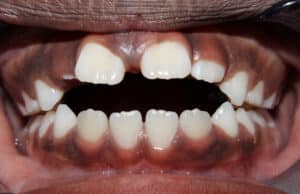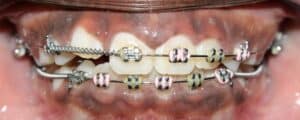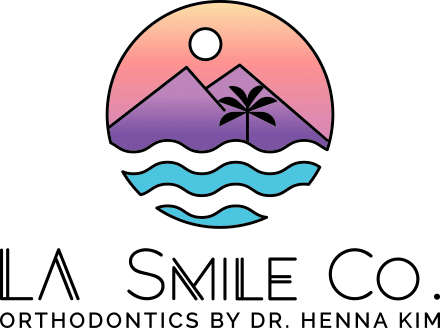Open bite is a common orthodontic issue characterized by a gap between the upper and lower teeth when the mouth is closed. When upper and lower teeth align properly, they meet with a slight overlap and touch upon biting down. An open bite leaves a visible space between the upper and lower teeth, which can affect aesthetics, speech, and functionality. Understanding the causes and treatments of an open bite is crucial for effective management and achieving optimal oral health.
Causes of Open Bite
- Genetic Factors: Genetic predispositions can significantly influence dental and skeletal structures. If parents or close relatives have an open bite, there is an increased likelihood of developing this condition.
- Prolonged Thumb Sucking or Pacifier Use: Extended habits such as thumb sucking or using a pacifier beyond the age of 3-4 years can cause the teeth to move forward, creating an open bite. The pressure exerted by these habits affects not only the alignment of the teeth but also the development of the jaws.
- Tongue Thrusting: Tongue thrusting, where the tongue pushes against the teeth during swallowing or speaking, can lead to an open bite. This repetitive pressure causes teeth to spread and to flare out, preventing the front teeth from coming together.
- Mouth Breathing: Chronic mouth breathing, often due to allergies or nasal obstructions, can alter the natural development of jaw and dental structures, leading to an open bite.
- Jaw Misalignment: Skeletal discrepancies such as an overdeveloped upper jaw or underdeveloped lower jaw can contribute to an open bite. These structural issues often require more complex treatment approaches.
Treatments for Open Bite
The treatment of an open bite depends on the severity and underlying cause of the condition. Orthodontists utilize various methods to correct an open bite, ranging from behavioral interventions to surgical procedures.
- Behavioral Modification: For children, addressing habits like thumb sucking or tongue thrusting can be an effective first step. Orthodontists may recommend using habit-breaking appliances or techniques to discourage these behaviors.
- Orthodontic Appliances:
- Braces: Traditional braces can gradually move teeth into proper alignment. By applying continuous pressure, braces help close the open bite over time.
- Clear Aligners: Clear aligners, such as Invisalign, are an alternative to traditional braces. These removable trays are customized to shift teeth into the desired position, making them a popular choice for adults and teenagers.
- Elastics: With either type of orthodontic appliance, intra-arch elastics can be prescribed to be worn for 22 hours/day to help with correcting the bite.
- Tongue Cribs or Spurs: These devices are used to prevent tongue thrusting. A tongue crib is a small appliance placed behind the front teeth, acting as a barrier to discourage the tongue from pushing against the teeth.
- Surgical Interventions: In severe cases where the open bite is due to skeletal issues, orthognathic surgery may be necessary. This surgical procedure involves realigning the jawbones to achieve proper bite and facial balance.
- Speech Therapy: For patients with tongue thrusting or speech issues related to an open bite, speech therapy can be beneficial. A speech therapist can work on correcting swallowing patterns and improving tongue posture.
- Retainers: After the initial treatment, retainers are essential to maintain the corrected bite. These devices ensure that teeth do not revert to their previous positions, preserving the results of orthodontic treatment.
Importance of Early Intervention
Early detection and intervention are critical in managing an open bite effectively. It is recommended that regular orthodontic check-ups for children start by age 7 to identify and address any developing issues promptly. Early treatment with a board-certified orthodontist like Dr. Henna Kim can simplify the correction process and reduce the need for more invasive procedures later in life.
An open bite can present challenges, but with modern orthodontic techniques and a comprehensive treatment approach, it is possible to achieve a functional and aesthetically pleasing smile. Understanding the causes and seeking timely intervention from a qualified orthodontist are key steps in addressing this condition. Whether through behavioral changes, orthodontic appliances, or surgical methods, personalized treatment plans can provide effective solutions for individuals with an open bite.



